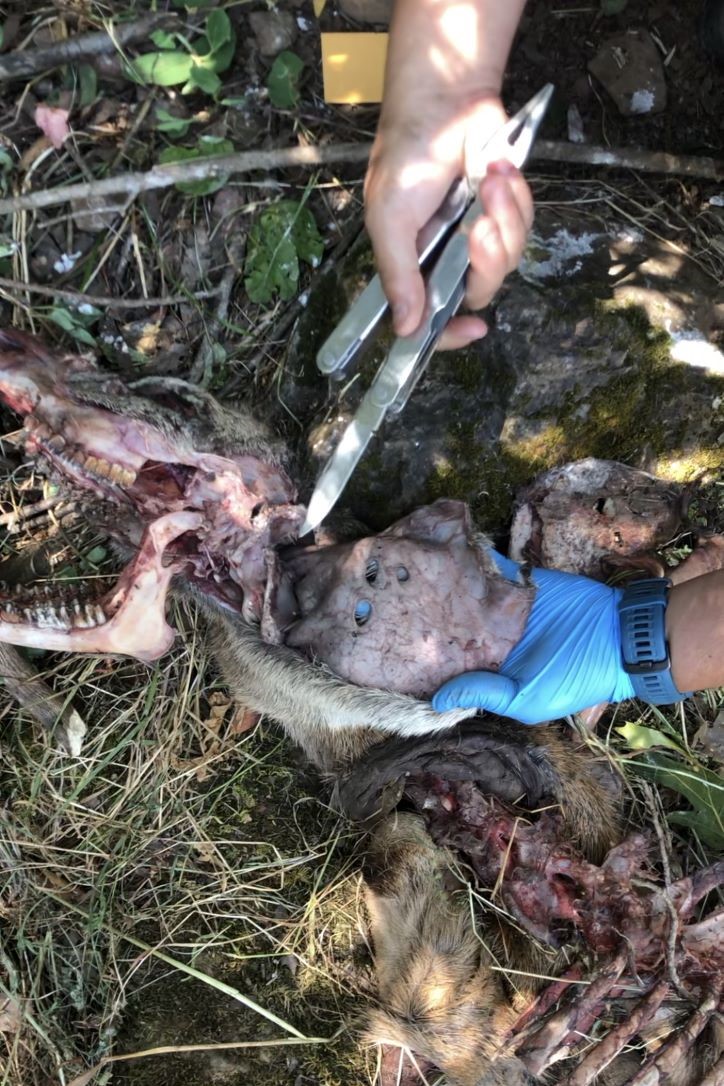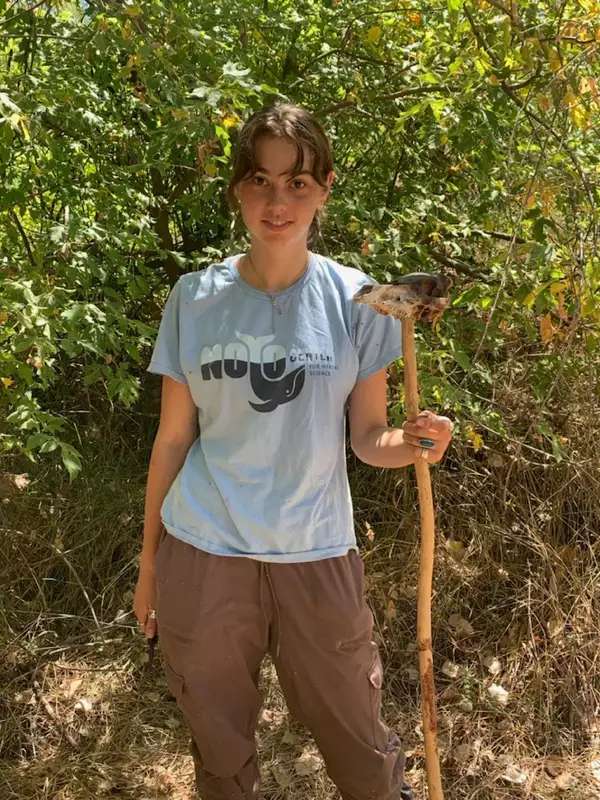Blog post #2 by Lily Davenport
So far this summer I have been focusing on data collection at mountain lion feeding locations. This work has built upon our current understanding of mountain lion feeding behavior. We have encountered many fawns at these locations indicating that they are the main source of prey during this time of year, likely because they are abundant and easy for the mountain lions to catch. As the summer progresses, we expect to see a shift from fawns to adult male deer as the main prey item. We hypothesize that this change is partially caused by adult males entering rutting season where they focus on acquiring mates making them more vulnerable to predation. I am continuing to learn about these feeding patterns as well as overall movement behavior.
An interesting development that has occurred this summer is that two of the collared female mountain lions have displayed denning activity meaning they likely have kittens. I have been learning how to discern this activity from other types using the GPS data points collected by their collars. These two females both spent time with the local collared male approximately three months, a full gestation period, before displaying denning behavior. In the next week we will be heading out to these locations to determine if there are kittens present and if so to take some initial data on them. There have been some challenges with acquiring access to properties where these den sites and other feeding sites are located which can present a difficulty to the research. We have been working to build awareness around mountain lions in order to help reduce misconceptions and to build the network of people and landowners involved in the project. Working with a controversial animal means that it is essential to have education and outreach built into the research project. This presents both difficulties and achievements as more and more people become aware of the animals they share the landscape with. It has been incredibly gratifying to see the interactions between humans and mountain lions and I hope to develop findings that will continue to mitigate conflict and build awareness in the future.

